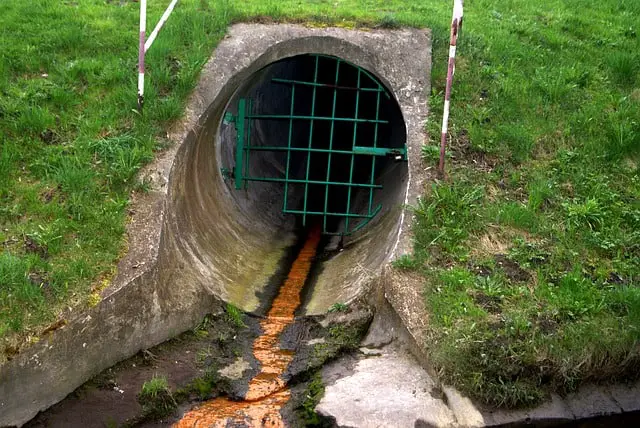Difference Between Septic Tank and Holding Tanks
Septic tank. Holding tank. Plenty of home and business property owners commonly and mistakenly interchange these two terms. Once and for all, know that a septic tank and a holding tank are two very different things. Yes, holding tanks and septic tanks both provide home and business facilities with space to store their wastewater, but they do have certain differences that you will need to carefully consider when deciding which of the two types of tank you need to purchase.
The Septic Tank
In summary, a septic tank is your first level of treatment if what you have is an on-site, dedicated septic system. A septic tank collects sewage and wastewater from a source (your home or business establishment), treats it, and then leaches this treated wastewater into the ground through mounds or a field.
A septic tank will have at least 2 chambers: one where liquid and solid wastes are separated, and a second which acts as a pumping chamber. In the first chamber, light solid matter floats to the top while the heavy solids sink to the bottom. This leaves a “clearer” layer of wastewater in the middle. This layer, called effluent, exits the septic tank through the outlet pipe and leads into the drainfield, where it disperses into the soil and bacteria will further break it down.
What distinguishes a septic tank from a holding tank is that a septic tank will definitely have an outlet pipe.
The size of septic tank that your property requires is primarily determined by the number of occupants there is in your facility, which translates to the number of bathrooms, how many uses kitchen sinks, toilets, etc. The septic tank you choose must be large enough to service a full household or business establishment.
The Holding Tank
In a few words, a holding tank merely holds sewage — it does not leach wastewater away into the ground. A holding tank collects the property’s wastewater and stores it for removal. A holding tank will have a single compartment which holds a limited amount of sewage. The stored sewage will eventually have to be removed by a vacuum truck and brought to a municipal treatment system. It makes sense, then, that because holding tanks do not process sewage, they will need to be serviced much more frequently than septic tanks. There is no outlet pipe in a holding tank. Wastewater that enters a holding tank remains there until it is pumped out.
The key thing to note about holding tanks is that these will not have an outlet pipe, unlike septic tanks.
The one thing that septic tanks and holding tanks have in common would be that they need to be pumped periodically. The frequency of pump-outs between these two tank types is what differs vastly.
A septic tank needs to be pumped out every one to three years (depending on variables, like occupants, usage habits, etc.). Periodic pumping of septic tanks is essential as this removes the solid wastes that have accumulated in the tank over time. Failure to do so regularly may result in back-ups, clogs, and eventual failure of your septic system. Your septic tank needs to be emptied from time to time to maintain its capacity to collect solid wastes. Note that liquid wastes are not of concern here, as these flow freely out of the septic tank into your drainfield.
On the other hand, a holding tank needs to be pumped out monthly, or every few weeks. Depending on the size of the holding tank and the amount of water typically used in your property, frequent pumping is needed to empty the tank because solid and liquid wastes build up in the tank with nowhere to go. There is no drainfield connected to a holding tank. The only way to empty a holding tank is to have it pumped.
Which one to choose?
Septic tanks are generally more preferred among these two options. This is because septic tanks will requires less maintenance and pump-outs, unlike with holding tanks. However, you will first need to consider your location’s soil conditions and other zoning mandates in order to determine if a septic tank and drainfield system will be viable for your home or business facility.
If your property is situated in an area that is within jurisdiction of a centralized municipal sewer system, holding tanks become the best option. Your local septic contractor should be able to provide you an estimate on the how often your holding tank will need emptying based on your water consumption and septic usage (number of people in the facility, bathrooms, etc.). They should also be able to accommodate larger tanks and remove waste in one load.
Either way, regular and periodic pumping out counts substantially toward helping you avoid potentially expensive septic repair work and environmental hazards in the event of a sewage spillover.
How Long Does a Septic Tank Last?
The lifespan of a septic tank mainly depends on what it’s made of. If your septic tank is made of concrete, note that this will be prone to cracking and corrosion. Cracks in a concrete septic tank can be troublesome as effluent can easily seep out of and groundwater can seep into your tank. Concrete tanks are durable enough to last you several decades, but cracks can happen much sooner if your concrete tank was made with low quality concrete mix, further aggravated by inadequate septic system maintenance. A concrete septic tank requires regular, periodic inspection and maintenance.
A steel septic tank can last you about 20 to 25 years, max. The problem with steel septic tanks is that they are susceptible to rust corrosion even before its 25-year lifespan has been hit. Similarly, the steel septic tank cover can rust through and deteriorate, posing serious hazards of caving in with even just the slightest weight. Likewise, steel septic tanks require regular and periodic manual inspection and maintenance.
Plastic or fiberglass septic tanks, on the other hand, are water-resistant and less vulnerable to cracks, rust, and corrosion. However, the lightweight plastic or fiberglass material makes it prone to structural damage. The lighter material can also cause a plastic septic tank to shift in the ground during wet soil conditions.
All in all, how long your entire septic system lasts will depend on a number of factors, including:
- Usage. What you flush down your toilets and allow down your drains all greatly affect your septic tank’s lifespan. Be careful of flushing and draining down non-biodegradable matter, oil and grease, and other toxic chemicals. Be aware, too, of the septic-safe cleaning aids that you use on your sinks, toilets, and drains. Also, the volume of water usage is an important factor. Excessive or wasteful water usage could overload your tank. High water volumes hamper the breakdown of the solid wastes. This increased water level within your tank forces solid matter to pass out of the tank and into the distribution lines that are built to handle only liquids, resulting to blockages in your lines or pipes.
- How often your tank is
pumped. The most important step you can take to
extend the lifespan of your septic system is to have the septic tank regularly
pumped. Two to five years is a good benchmark, depending on the number of occupants
or users in your property plus their usage habits.
- Tree roots. The infiltration of tree roots into your septic tank system is another common problem you need to watch out for. Professional septic tank installation should always take into account the growth of nearby trees and plants to diminish this possibility. This is because tree roots will naturally be drawn to the high density of nutrients and moisture that are present in your septic tank and lines. It is common for tree roots to gradually grow around and into your septic tank, encroaching on whatever small leaks and cracks there might be, eventually aggravating them over time.
Understanding the proper and necessary procedures for septic tank maintenance and care will only help in prolonging the lifespan of your septic tank and, overall, your on-site wastewater treatment system and maximizing its functionality.
Pumping a Holding or Septic Tank: How Often Should You Do It?
A holding tank will need to be pumped depending on two things: the water usage within a particular property (whether home or business) and the size of the tank itself. Most holding tanks are equipped with alarms to indicate when it is full. Failure to pump a holding tank will result to backing up of wastewater into the facility or to it surfacing on the ground. Typically, a holding tank needs to be pumped every 6 to 8 weeks, whereas seasonal residences (like vacation cabins) may only need to be pumped once or twice every year.
Septic tanks, similarly, need to be pumped depending on the size of the tank and the number of occupants in the property. On the average, this means pumping is required once every 2 to 4 years. If you have more than four people in your home or full-time users in a business, and/or if you use a garbage disposal frequently, your septic tank will need to be pumped every 1 to 2 years.
The Cost of Pumping Out a Holding Tank and a Septic Tank
Under normal conditions, a good schedule to follow for pumping of septic tanks would be:
| Number of Occupants | Pump Every: |
| 1 to 2 | 3 years |
| 3 to 5 | 2 years |
| 6 or more | 1 year |
Your trusted septic specialist will be able to determine the more specific frequency for your property. Pumping a septic tank will typically cost you anywhere from $75 to $200. To break it down, let’s say you have your septic tank pumped every 3 years and it costs you $150. That’s $50 per year in sewage treatment. If you have it done every 2 years, that’s $75. And so on. On the other hand if you are connected to a centralized sewer system, you could be paying your municipality about $300 to $800 (or more) annually for the same treatment.
“Pump and haul” collection is best used when what you have is a holding tank, when your soil absorption field is not functional, or when there is no centralized sewer system available to your location. This system of collection may also simply be the most cost-effective alternative in some locations.
Typically, pump and haul is ideal for second homes, where occupancy may be only a few days to a few months in each year; where there is a need to diminish nuisance or public health hazards; where your facility is located in a remote area where running water is not available; temporary structures; or in environmentally-sensitive areas where nutrients must be kept away from ground water.
Pump and haul collection can become quite expensive when homes or facilities are occupied all the time or where the distance from the treatment plant is more than a few miles. More recent cost estimates for holding tank pump and haul wastewater disposal is about $1 per gallon of capacity. The pumping itself is anywhere in the range of 10 to 30 cents per gallon, and then you need to factor in labor, travel and equipment charges (depending on the contractor, these costs may be included in a flat fee). Travel costs becomes significantly higher if the round-trip distance to and from the holding tank and the disposal site exceeds 50 miles.
Again, a holding tank or septic vault collects wastewater from a home or commercial establishment and stores it until it is pumped out and hauled to a receiving/processing facility. Remember, though a holding tank may appear similar to a septic tank, a holding tank will have no outlet piping and has to be watertight at all times. A holding tank has a volume capacity in the range of 1,000 to 4,000 gallons or more. If you do the math, that’s about $1,000 to $4,000 in pump and haul fees. Your holding tank should be equipped with an audible and visible high-water alarm, to alert you when pumping is required.
There are also permit costs to be able to discharge the sewage removed from a septic holding tank to an appointed site (treatment plant, land spreading site, or independent treatment facility) which can add up to substantial costs. Multiple pumping from a fully-occupied house or business can become extremely expensive.
When to Use a Holding Tank
Holding tanks or septic vaults are ideal where conventional and typical septic systems are not feasible. Holding tanks are often installed for seasonal (vacation) homes and properties situated in environmentally-sensitive conditions. Holding tanks can be used to collect wastewater flow from the facility either entirely or partially. Usually, holding tanks are collect the greywater when non-water-carriage toilets are installed.
Holding tanks should be used only in locations where there is a proper septic collection management in place. It is a construction requirement to submit your holding tank to an on-site testing for tank leakage, viable design, and functional alarm system. These elements are vital prior to acceptance or approval for use.
Regardless of what size holding tank you have, conservative water usage can reduce costs considerably as this reduces the frequency of pumping required.
Another advantage to having a holding tank is that the skill requirements for on-site pumping and hauling are relatively minimal and the whole process can be approximated at 1 hour per pumping. There normally are no energy requirements, too. However, the same confined-space entry safety requirements must be followed if tank entry is required, as with septic tanks.
The Advantages of Having a Septic Tank
If you your property is situated in a rural jurisdiction or in an area far from the city, you are most likely to have a septic tank system in your home as opposed to being connected to the public sewer system. There are several advantages to having an on-site dedicated septic system, and these are:
1. Septic Tank Systems are Environmentally Friendly
Sewer lines are prone to occasional raw sewage leakage which contaminates groundwater. On the other hand, there is less risk for sewage leakage in septic tank systems because a septic system doesn’t run through a sewer system. Also, septic systems use a natural filtration system that minimizes pollution.
2. Septic Tank Systems are Economical
Septic tank systems save you money in the long run. It is more cost-efficient to install your own septic tank and drainfield than to install and maintain sewer pipes. Furthermore, using a septic system eliminates public utility bills, reducing your local government obligations in the long run.
3. Septic Tank Systems are Low-Maintenance
Septic tank systems are relatively more low-maintenance and will only really need septic tank pumping every three to five years. That is, if proper usage habits are observed. Periodic pumping and inspection will keep your septic tank optimized and functional for a long time.
4. Septic Tank Systems are Long-Lasting
Septic tanks can last you around 20 to 40 years, depending on you and your occupants’ usage. With proper care and maintenance, you can expect your septic tank and septic system to last you throughout your entire stay in your home or business establishment.
5. Septic Tank Systems are Your On-Site Water Treatment Facility
Septic tanks have their own water filtration systems, so you don’t have to depend on the safety and stability of city sewer systems. Whenever problems arise, you can have it fixed quickly and efficiently by calling a septic plumbing service. You are liberated from having to go through several bureaucratic channels.
Visit our State Directory For Local Septic Service Providers
https://www.biffsseptic.com/Septic-Tank-vs-Holding-Tank
https://www.quora.com/What-is-the-difference-between-a-holding-tank-and-a-septic-tank
https://inspectapedia.com/septic/Septic_System_Life.php
https://laundry-alternative.com/blogs/news/cost-of-pumping-a-septic-tank
https://nearsay.com/c/218974/73949/5-advantages-of-a-septic-tank-system











